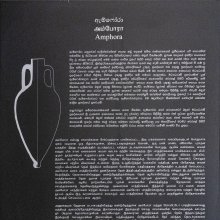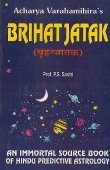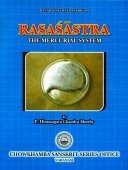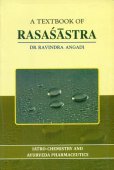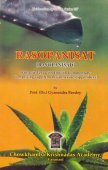Varga, Vargā: 20 definitions
Introduction:
Varga means something in Hinduism, Sanskrit, the history of ancient India, Marathi, Hindi. If you want to know the exact meaning, history, etymology or English translation of this term then check out the descriptions on this page. Add your comment or reference to a book if you want to contribute to this summary article.
Alternative spellings of this word include Varg.
Images (photo gallery)
In Hinduism
Vyakarana (Sanskrit grammar)
Source: Wikisource: A dictionary of Sanskrit grammarVarga (वर्ग).—Name given to the different classes of consonants which are headed by an unaspirate surd; e. g. कवर्ग, चवर्ग, टवर्ग, तवर्ग (kavarga, cavarga, ṭavarga, tavarga) and पवर्ग (pavarga). The several consonants in each group or class, are, in their serial order, named वगेप्रथम, वर्गद्वितीय (vageprathama, vargadvitīya) etc. On the analogy of these five classes, the semivowels are called by the name यवर्ग (yavarga) and sibilants, are called by the name शवर्ग (śavarga),

Vyakarana (व्याकरण, vyākaraṇa) refers to Sanskrit grammar and represents one of the six additional sciences (vedanga) to be studied along with the Vedas. Vyakarana concerns itself with the rules of Sanskrit grammar and linguistic analysis in order to establish the correct context of words and sentences.
Jyotisha (astronomy and astrology)
Source: Wikibooks (hi): Sanskrit Technical TermsVarga (वर्ग).—1. Square, in arithmetic or geometry; abbr. as va in algebra. 2. The first twenty-five consonants in the Sanskrit alphabet. Note: Varga is a Sanskrit technical term used in ancient Indian sciences such as Astronomy, Mathematics and Geometry.

Jyotisha (ज्योतिष, jyotiṣa or jyotish) refers to ‘astronomy’ or “Vedic astrology” and represents the fifth of the six Vedangas (additional sciences to be studied along with the Vedas). Jyotisha concerns itself with the study and prediction of the movements of celestial bodies, in order to calculate the auspicious time for rituals and ceremonies.
Purana and Itihasa (epic history)
Source: archive.org: Puranic EncyclopediaVargā (वर्गा).—A celestial maid. There is a story in Mahābhārata, Ādi Parva, Chapter 220, describing how Vargā and her friends were changed into crocodiles and had to live in water for a long time.
Once there lived an 'apsaras' (celestial maid) named Vargā in Devāraṇya. She had four friends called Saurabheyī, Samīcī, Budbudā and Latā. Once they were going to the house of Kubera their patron. On the way they saw a hermit. They saw the whole forest shining with the radiance of the power of penance of the hermit. They decided to entice the hermit somehow. With this intention they entered his hermitage. Seeing their dalliance and coquetry, the hermit got angry and cursed them to become crocodiles for a hundred years. They implored him with tears, for liberation from the curse. The hermit told them that in due course a noble man would come and get them out of water and that then they would obtain their original form. They walked towards a lake. (See full article at Story of Vargā from the Puranic encyclopaedia by Vettam Mani)

The Purana (पुराण, purāṇas) refers to Sanskrit literature preserving ancient India’s vast cultural history, including historical legends, religious ceremonies, various arts and sciences. The eighteen mahapuranas total over 400,000 shlokas (metrical couplets) and date to at least several centuries BCE.
Vastushastra (architecture)
Source: OpenEdition books: Architectural terms contained in Ajitāgama and RauravāgamaVarga (वर्ग) refers to “- 1. level of elevation §§ 3.1, 12, 29; 4.6 ... —2. generic name of āyādi formulas § 2.6.”.—(For paragraphs cf. Les enseignements architecturaux de l'Ajitāgama et du Rauravāgama by Bruno Dagens)

Vastushastra (वास्तुशास्त्र, vāstuśāstra) refers to the ancient Indian science (shastra) of architecture (vastu), dealing with topics such architecture, sculpture, town-building, fort building and various other constructions. Vastu also deals with the philosophy of the architectural relation with the cosmic universe.
Ganitashastra (Mathematics and Algebra)
Source: archive.org: Hindu Mathematics1) Varga (वर्ग, “square”) refers to one of the twenty operations (logistics) of pāṭīgaṇita (“science of calculation which requires the use of writing material—the board”), according to Pṛthudakasvāmī’s commentary on the Brāhmasphuṭasiddhānta by Brahmagupta, a Sanskrit treatise on ancient Indian mathematics (gaṇita-śāstra) and astronomy from the 7th century.—The Sanskrit term for square is varga or kṛti. The word varga literally means “rows” or “troops” (of similar things). But in mathematics it ordinarily denotes the square power and also the square, figure or its area. Both the terms varga and kṛti have been used in the mathematical treatises, but preference is given to the term varga. Later writers, while defining these terms in arithmetic, restrict its meaning.
Āryabhaṭa I in the Āryabhaṭīya: “A square figure of four equal sides 2 and the (number representing its) area are called varga. The product of two equal quantities is also varga”.
Śrīdhara in the Triśatikā: “The product of two equal numbers is varga. [...] Having squared the last digit multiply the rest of the digits by twice the last; then move the rest of the digits. Continue the process of moving (the remaining digits after each operation) to obtain the square”.
Brahmagupta in the Brāhmasphuṭasiddhānta: “Combining the product, twice the digit in the less 4 (lowest) place into the several others (digits), with its (i.e., of the digit in the lowest place) square (repeatedly) gives the square (varga)”.
Mahāvīra in the Gaṇitasārasaṃgraha: “Having squared the last (digit), multiply the rest of the digits by twice the last, (which is) moved for- ward (by one place). Then moving the remaining digits continue the same operation (process). This gives the square (varga)”.
Bhāskara II in the Līlāvatī: “Place the square of the last (digit) over itself; and then the products of twice the last (digit) and the others (i.e., the rest) over themselves respectively. Next, moving the number obtained by leaving the last digit (figure), repeat the procedure”.
2) Varga (वर्ग) refers to the “second power”, according to the principles of Bījagaṇita (“algebra” or ‘science of calculation’).—The oldest Hindu terms for the power of a quantity, known or unknown, are found in the Uttarādhyayana-sūtra (c. 300 B.C. or earlier). In it the second power is called varga (square), the third power ghana (cube), the fourth power vargavarga (square-square), the sixth power ghanavarga (cube-square), and the twelfth power ghanavargavarga (cube-square-square), using the multiplicative instead of the additive principle. [...]

Ganitashastra (शिल्पशास्त्र, gaṇitaśāstra) refers to the ancient Indian science of mathematics, algebra, number theory, arithmetic, etc. Closely allied with astronomy, both were commonly taught and studied in universities, even since the 1st millennium BCE. Ganita-shastra also includes ritualistic math-books such as the Shulba-sutras.
Shaivism (Shaiva philosophy)
Source: SOAS University of London: Protective Rites in the Netra TantraVarga (वर्ग) refers to the “categories of phonemes”, according to the Netratantra of Kṣemarāja: a Śaiva text from the 9th century in which Śiva (Bhairava) teaches Pārvatī topics such as metaphysics, cosmology, and soteriology.—The description of the mantra in the Netratantra relies on several aspects of the gross world: the earth, organic matter, and the phonemes of the mātṛkā (a, ka, ca, ṭa, ta, pa, ya, and śa). [...] Through the physical creation of the mantra, the practitioner extracts and worships the Mātṛkā as a goddess. Both the Siddhayogeśvarīmata and Svacchandatantra also worship the goddess Mātṛkā as the power of Rudra. Rudra possesses all the letters of the alphabet and hence is the source of the categories of phonemes (vargas)

Shaiva (शैव, śaiva) or Shaivism (śaivism) represents a tradition of Hinduism worshiping Shiva as the supreme being. Closely related to Shaktism, Shaiva literature includes a range of scriptures, including Tantras, while the root of this tradition may be traced back to the ancient Vedas.
India history and geography
Source: Cologne Digital Sanskrit Dictionaries: Indian Epigraphical GlossaryVarga.—(CII 1), a group or cadre of officers. Note: varga is defined in the “Indian epigraphical glossary” as it can be found on ancient inscriptions commonly written in Sanskrit, Prakrit or Dravidian languages.

The history of India traces the identification of countries, villages, towns and other regions of India, as well as mythology, zoology, royal dynasties, rulers, tribes, local festivities and traditions and regional languages. Ancient India enjoyed religious freedom and encourages the path of Dharma, a concept common to Buddhism, Hinduism, and Jainism.
Languages of India and abroad
Marathi-English dictionary
Source: DDSA: The Molesworth Marathi and English Dictionaryvarga (वर्ग).—m (S) A class, order, division, tribe, set; a number of beings or things ranged under a common denomination. Some compounds are common; as pradhānavarga, dāsavarga, brāhmaṇavarga, matsyavarga, dhānya- varga, rasavarga. 2 The square of a number. 3 A chapter, section, part, book.
Source: DDSA: The Aryabhusan school dictionary, Marathi-Englishvarga (वर्ग).—m A class. The square of a number. A section.
Marathi is an Indo-European language having over 70 million native speakers people in (predominantly) Maharashtra India. Marathi, like many other Indo-Aryan languages, evolved from early forms of Prakrit, which itself is a subset of Sanskrit, one of the most ancient languages of the world.
Sanskrit dictionary
Source: DDSA: The practical Sanskrit-English dictionaryVarga (वर्ग).—[vṛj-ghañ]
1) A class, division, group; company, society, tribe, collection (of similar things); न्यषेधि शेषो- ऽप्यनुयायिवर्गः (nyaṣedhi śeṣo- 'pyanuyāyivargaḥ) R.2.4; 11.7; so पौरवर्गः, नक्षत्रवर्गः (pauravargaḥ, nakṣatravargaḥ) &c.
2) A party, side; वर्गाबुभौ देवमहीधराणाम् (vargābubhau devamahīdharāṇām) Kumārasambhava 7.53.
3) A category.
4) A class of words grouped together; as मनुष्य- वर्गः, वनस्पतिवर्गः (manuṣya- vargaḥ, vanaspativargaḥ) &c.
5) A class of consonants in the alphabet; (as kavarga, cavarga etc.).
6) A section, chapter, division of a book.
7) Particularly, a subdivision of an Adhyāya in Ṛgveda.
8) The square power.
9) Strength.
1) Sphere, province.
11) The whole class of objects of worldly existence (dharma, artha and kāma).
Derivable forms: vargaḥ (वर्गः).
Source: Cologne Digital Sanskrit Dictionaries: Shabda-Sagara Sanskrit-English DictionaryVarga (वर्ग).—m.
(-rgaḥ) A class, a tribe, a multitude of similar things, whether animate or inanimate; as Ka-varga, the class of guttural letters; Tri-varga, a class of three objects, (as love, duty, and wealth); the Sudra-varga, the Sudra tribe. 2. A chapter, a book, a section. 3. A square number, (in arithmetic.) 4. Strength. E. vṛj to quit, to except, (any thing else), aff. ghañ .
Source: Cologne Digital Sanskrit Dictionaries: Benfey Sanskrit-English DictionaryVarga (वर्ग).—i. e. vṛj + a, m. 1. A class (a multitude of similar things), [Pañcatantra] 33, 14. 2. A troop, [Pañcatantra] 192, 23. 3. A chapter.
Source: Cologne Digital Sanskrit Dictionaries: Cappeller Sanskrit-English DictionaryVarga (वर्ग).—[adjective] & [masculine] removing, remover; [masculine] group, section, division, party, class, [especially] of words or sounds ([grammar]).
Source: Cologne Digital Sanskrit Dictionaries: Monier-Williams Sanskrit-English Dictionary1) Varga (वर्ग):—m. (accented only in [Nighaṇṭuprakāśa]) ([from] √vṛj) one who excludes or removes or averts, [Kauṣītaki-upaniṣad]
2) (ifc. f(ā). ) a separate division, class, set, multitude of similar things (animate or inanimate), group, company, family, party, side (mostly ifc. e.g. catur-, tri-v q.v.; often [plural] for sg.), [Kātyāyana-śrauta-sūtra; Prātiśākhya] etc.
3) ([especially]) any series or group of words classified together (as manuṣya-vanas-pati-v etc.), or a class or series of consonants in the alphabet (seven such classes being given, viz. ka-varga, ‘the class of Guttural letters’ ca-kāra-v, or ca-v, ‘the Palatals’ ; ṭa-v ‘the Cerebrals’; ta-v ‘the Dentals’; pa-v ‘the Labials’; ya-v ‘the Semivowels’; śa-v ‘the Sibilants’, and the aspirate h cf. varga-dvitīya and -prathama), [Prātiśākhya; Varāha-mihira’s Bṛhat-saṃhitā; Vopadeva]
4) everything comprehended under any department or head, everything included under a category, province or sphere of [Varāha-mihira’s Bṛhat-saṃhitā]
5) = tri-varga (q.v.), [Bhāgavata-purāṇa]
6) a section, chapter, division of a book, ([especially]) a subdivision of an Adhyāya in the Ṛg-veda (which [according to] to the mere mechanical division, contains 8 Āṣṭakas or 64 Adhyāyas or 2006 Vargas; cf. maṇḍala) and a similar subdivision in the Bṛhad-devatā
7) (in [algebra]) the square of a number, [Colebrooke] (e.g. pañca-v, square of five cf. bhinna-v)
8) = bala, strength, [Naighaṇṭuka, commented on by Yāska ii, 9]
9) Name of a country, [Buddhist literature]
10) Vargā (वर्गा):—[from varga] f. Name of an Apsaras, [Mahābhārata]
Source: Cologne Digital Sanskrit Dictionaries: Yates Sanskrit-English DictionaryVarga (वर्ग):—(rgaḥ) 1. m. A class; a section; a square number.
Source: DDSA: Paia-sadda-mahannavo; a comprehensive Prakrit Hindi dictionary (S)Varga (वर्ग) in the Sanskrit language is related to the Prakrit word: Vagga.
[Sanskrit to German]
Sanskrit, also spelled संस्कृतम् (saṃskṛtam), is an ancient language of India commonly seen as the grandmother of the Indo-European language family (even English!). Closely allied with Prakrit and Pali, Sanskrit is more exhaustive in both grammar and terms and has the most extensive collection of literature in the world, greatly surpassing its sister-languages Greek and Latin.
Hindi dictionary
Source: DDSA: A practical Hindi-English dictionaryVarga (वर्ग) [Also spelled varg]:—(nm) a class, category, group; group of letters pronounced from the same part of the vocal organ (as [kavarga, cavarga] etc.); a square; square number; —, [ucca] the upper class; —[aura jāti/varṇa] class and caste; ~[gata] pertaining to a class, characteristic of a class; •[viśeṣatāeṃ] class characteristics; -[dvaṃdva] class struggle, class conflict; —, [nimna] the lower class; —, [nimna madhya] lower middle class; -[pahelī] crossword puzzle; ~[phala] square; -[bheda] class distinction/discrimination; ~[mukta] classless; ~[mūla] square root; ~[vāra] classwise; -[saṃgharṣa] class struggle, class conflict; -[samāja] class society; —[svārtha] class interest; —[hita] class interest; ~[hīna] classless; •[samāja] classless society.
...
Kannada-English dictionary
Source: Alar: Kannada-English corpusVarga (ವರ್ಗ):—
1) [noun] the act or process of excluding exclusion.
2) [noun] a number of persons or things regarded as forming a group by reason of common attributes, characteristics, qualities or traits.
3) [noun] people, things, etc. that are classified into one class.
4) [noun] (biol.) a group of relatively closely related animals or plants having a common basic structure and ranking below a phylum or division and above an order; a class.
5) [noun] a group of persons with common purposes or opinions who support one side of a dispute, question, debate, etc.; a party.
6) [noun] the three goals of Hindu life, they being artha (economic activities), Kāma (pleasure and desire), and dharma (righteousness).
7) [noun] any of the four social divisions, the Brahman, Kshatriya, Vaisya, and Shudra, of Hindu society; varṇa.
8) [noun] a group of words that are classified, on some basis, as one class.
9) [noun] a chapter or main division of a book.
10) [noun] a region, district or country.
11) [noun] a group of students taught together according to standing, subject, etc.; a class.
12) [noun] a transferring of a person, thing etc. from one place to another.
13) [noun] a government containing details regarding the ownership of a land.
14) [noun] classified accounts.
15) [noun] (math.) the product of a number or quantity multiplied by itself; square.
16) [noun] any of five groups of five consonants each in Kannaḍa alphabet systems, that includes from " ಕ" to "ಮ".
17) [noun] ವರ್ಗ ಮಾಡು [varga madu] varga māḍu to join (two or more persons, things, etc.) together; 2. (mus.) to multiply one quantity by another.
18) [noun] to transfer (a person, thing) from one place to another (as an employee from one workplace to another).
19) [noun] to transfer (one’s) office, power, authority, etc. to (another person).
Kannada is a Dravidian language (as opposed to the Indo-European language family) mainly spoken in the southwestern region of India.
Nepali dictionary
Source: unoes: Nepali-English DictionaryVarga (वर्ग):—n. 1. class; group; species; 2. social group; class; 3. section; chapter; 4. Math. square; 5. Gram. any of the several classes of consonants sharing a point or area of articulation (esp. guttural; palatal; retroflex; dental) and arranged as separate group in the Devanagari syllabary;
Nepali is the primary language of the Nepalese people counting almost 20 million native speakers. The country of Nepal is situated in the Himalaya mountain range to the north of India.
See also (Relevant definitions)
Starts with (+50): Varga-kilomitara, Varga-samanvaya, Varga-sangharsha, Varga-vibhajana, Vargaamada Vargaraphata, Vargabheda, Vargaboli, Vargacarin, Vargacetana, Vargacharin, Vargachetana, Vargaculika, Vargadara, Vargadvandva, Vargadvitiya, Vargaghana, Vargaghanaghata, Vargaghanasarini, Vargahina, Vargahina-samaja.
Ends with (+213): Abhivarga, Abhyangavarga, Adhikarivarga, Aharayogivarga, Amlavarga, Amradivarga, Anapavarga, Anekarthadivarga, Annavarga, Anupadivarga, Anupanavarga, Anuvarga, Apavarga, Aptavarga, Aranyakavarga, Ari-shad-varga, Arishadvarga, Arishtavarga, Arivarga, Ashavarga.
Full-text (+3316): Vagga, Bhinnavarga, Trivarga, Vargamula, Pancavarga, Vargavarga, Samvargam, Vargas, Kash-aya, Samici, Vargaghana, Pana-vargam, Ashtavarga, Budbuda, Pravarga, Rakshivarga, Naritirtha, Vaḻudiy-accu-vargam, Prativargam, Saurabheyi.
Relevant text
Search found 83 books and stories containing Varga, Vargā; (plurals include: Vargas, Vargās). You can also click to the full overview containing English textual excerpts. Below are direct links for the most relevant articles:
Sahitya-kaumudi by Baladeva Vidyabhushana (by Gaurapada Dāsa)
Text 8.21 < [Chapter 8 - Literary Qualities]
Text 7.121 < [Chapter 7 - Literary Faults]
Text 8.23 < [Chapter 8 - Literary Qualities]
Kashyapa Shilpa-shastra (study) (by K. Vidyuta)
4 (b). Technical terms for the component parts of the temple < [Chapter 2 - Author and his Works]
4. Fourteen types of Samāśra (Square) Maṇḍapas < [Chapter 4 - Maṇḍapa Lakṣaṇa]
The Fo-Sho-Hing-Tsan-King (A Life of Buddha) (by Samuel Beal)
Lives of Buddha (5): Cung-pen-k’i-king < [Introduction]
Lives of Buddha (2): Siu-hing-pen-k’i-king < [Introduction]
History of Bodhisattva Aśvaghoṣa < [Introduction]
Puranic encyclopaedia (by Vettam Mani)
Bhesajjakkhandhaka (Chapter on Medicine) (by Hin-tak Sik)
(c) The Bhesajjakkhandhaka (Chapters on Medicine) < [Chapter 2 - Background Information]
(b) The Skandhaka < [Chapter 2 - Background Information]
The Vinaya Piṭaka, Skandhaka, and Bhesajjakkhandhaka < [Chapter 2 - Background Information]
Related products
(+7 more products available)


